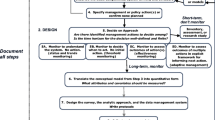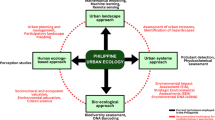Abstract
The method of disjunctive kriging is applied to the evaluation of blocks of ore in a gold mine, and the estimated block values are compared with the true block values. First the theory of disjunctive kriging as applicable to mine valuation is presented from the user's viewpoint. The theory is then applied to process sample values originating from a large gold mine. Using the computer simulation of a number of sampling programs, estimated values and true values are compared. The disjunctive kriging estimates are also compared with estimates obtained by other methods of evaluation, including logarithmic kriging. It is shown that the results obtained, using real world data, are in complete agreement with the results expected according to the geostatistical theory.
Similar content being viewed by others
References
Abramowitz, M. and Stegun, D. A., 1970, Handbook of mathematical functions with formulas, graphs and mathematical tables (Abramowitz, M. and Stegun, D. A., eds.): National Bureau of Standards Applied Mathematics Series, 55, U.S. Government Printing Office, Washington, D.C., 1046 p.
Jackson, M. and Marechal, A., 1979, Recoverable reserves estimated by disjunctive kriging: a case study,in 16th application of computers and operations research in the mineral industry (O'Neil, T. J., ed.): Society of Mining Engineers of American Institute of Mining and Metallurgy, New York, pp. 240–249.
Journel, A. G. and Huijbregts, Ch. J., 1978, Mining geostatistics: Academic Press, New York, 600 p.
Kim, Y. C., Myers, D. E., and Knudsen, H. P., 1977, Advanced geostatistics in ore reserve estimation and mine planning: United States Department of Energy, Grand Junction, Colorado, 237 p.
Marechal, A., 1976, The practice of transfer functions: numerical methods and their application,in Advanced geostatistics in the mining industry (Guarascio, M., David, M., and Huijbregts, eds.): Reidel, Boston, pp. 253–276.
Matheron, G., 1976a, A simple substitute for conditional expectation: the disjunctive kriging,in Advanced geostatistics in the mining industry (Guarascio, M., David, M., and Huijbregts, eds.): Reidel, Boston, pp. 221–236.
Matheron, G., 1976b, Forecasting block grade distributions: the transfer functions,in Advanced geostatistics in the mining industry (Guarascio, M., David, M., and Huijbregts, eds.): Reidel, Boston, pp. 237–251.
Rendu, J. M., 1978, An introduction to geostatistical methods of mineral evaluation (G. S. Baker, ed.), South African Institute of Mining and Metallurgy Monograph Series, Johannesburg, 84 p.
Rendu, J. M., 1979a, Kriging, logarithmic kriging and conditional expectation, comparison of theory with actual results,in 16th application of computers and operations research in the mineral industry (O'Neil, T. J., ed.): Society of Mining Engineers of American Institute of Mining and Metallurgy, New York, pp. 199–212.
Rendu, J. M., 1979b, Normal and lognormal estimation, Jour. Int. Assoc. Math. Geol., Vol. 11, No. 4, pp. 407–422.
Author information
Authors and Affiliations
Rights and permissions
About this article
Cite this article
Rendu, JM. Disjunctive kriging: Comparison of theory with actual results. Mathematical Geology 12, 305–320 (1980). https://doi.org/10.1007/BF01029418
Received:
Revised:
Issue Date:
DOI: https://doi.org/10.1007/BF01029418




